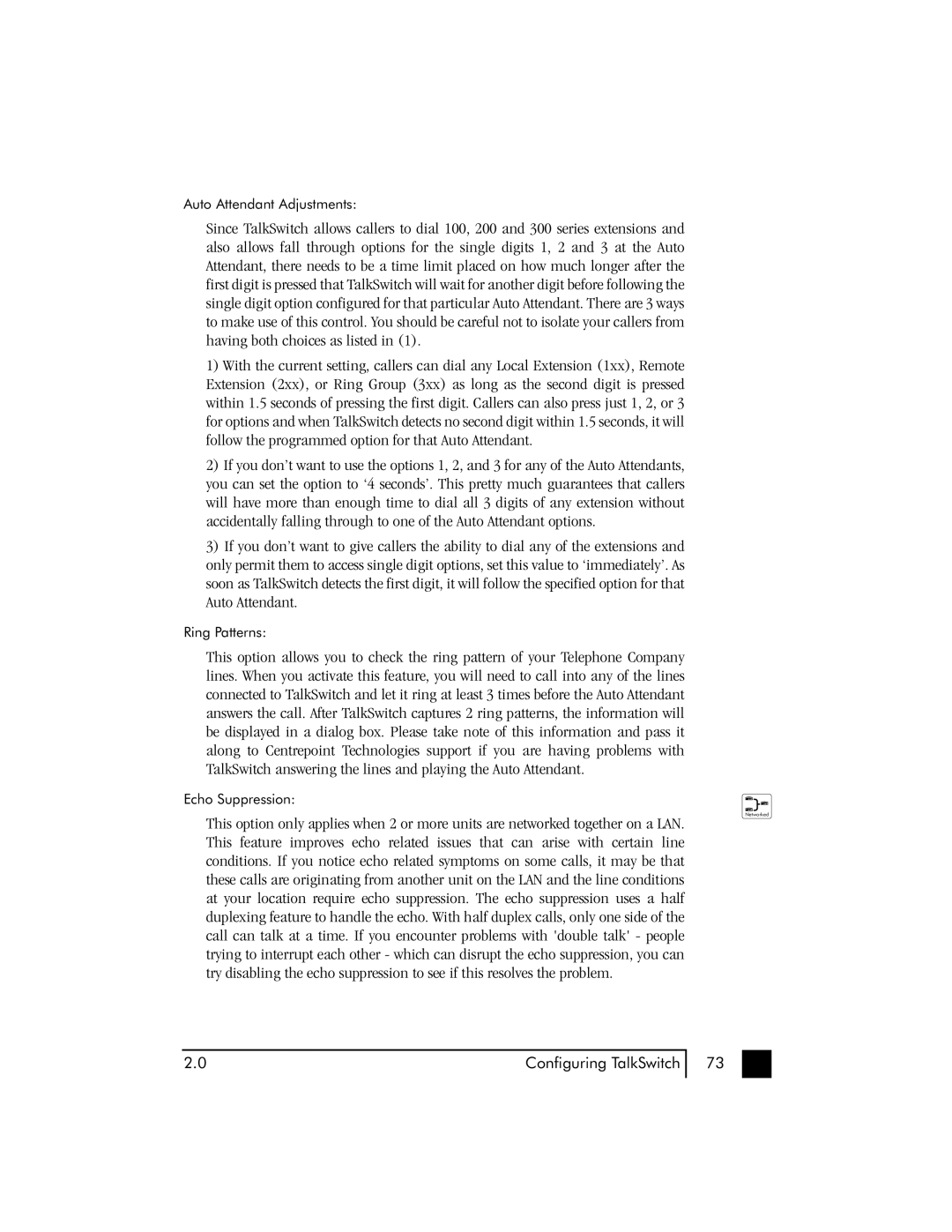
Auto Attendant Adjustments:
Since TalkSwitch allows callers to dial 100, 200 and 300 series extensions and also allows fall through options for the single digits 1, 2 and 3 at the Auto Attendant, there needs to be a time limit placed on how much longer after the first digit is pressed that TalkSwitch will wait for another digit before following the single digit option configured for that particular Auto Attendant. There are 3 ways to make use of this control. You should be careful not to isolate your callers from having both choices as listed in (1).
1)With the current setting, callers can dial any Local Extension (1xx), Remote Extension (2xx), or Ring Group (3xx) as long as the second digit is pressed within 1.5 seconds of pressing the first digit. Callers can also press just 1, 2, or 3 for options and when TalkSwitch detects no second digit within 1.5 seconds, it will follow the programmed option for that Auto Attendant.
2)If you don’t want to use the options 1, 2, and 3 for any of the Auto Attendants, you can set the option to ‘4 seconds’. This pretty much guarantees that callers will have more than enough time to dial all 3 digits of any extension without accidentally falling through to one of the Auto Attendant options.
3)If you don’t want to give callers the ability to dial any of the extensions and only permit them to access single digit options, set this value to ‘immediately’. As soon as TalkSwitch detects the first digit, it will follow the specified option for that Auto Attendant.
Ring Patterns:
This option allows you to check the ring pattern of your Telephone Company lines. When you activate this feature, you will need to call into any of the lines connected to TalkSwitch and let it ring at least 3 times before the Auto Attendant answers the call. After TalkSwitch captures 2 ring patterns, the information will be displayed in a dialog box. Please take note of this information and pass it along to Centrepoint Technologies support if you are having problems with TalkSwitch answering the lines and playing the Auto Attendant.
Echo Suppression:
Networked
This option only applies when 2 or more units are networked together on a LAN. This feature improves echo related issues that can arise with certain line conditions. If you notice echo related symptoms on some calls, it may be that these calls are originating from another unit on the LAN and the line conditions at your location require echo suppression. The echo suppression uses a half duplexing feature to handle the echo. With half duplex calls, only one side of the call can talk at a time. If you encounter problems with 'double talk' - people trying to interrupt each other - which can disrupt the echo suppression, you can try disabling the echo suppression to see if this resolves the problem.
2.0 | Configuring TalkSwitch |
73
